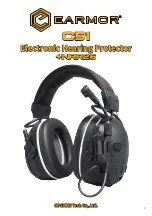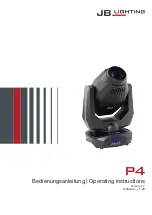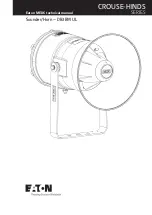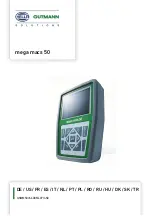
Appendix G: Accessories
249
not remove the exhalation control tube from the cover.) Visually check if
there are any defects in the membrane. Take apart all three components of
exhalation valve (cap, membrane and housing).
3.
Disassemble the Flow Sensor and the Y-Connector.
Washing
NOTE
It is recommended to use Multi-tierd Endozime AW Plus or similar cleaner
solution to remove all bio-burden material. If using Endozime, dilute one-half
ounce (15 grams) of Multi-tierd Endozime AW Plus in 1 gal of water (3.8 liters).
1.
Immerse the patient circuit components in the diluted Endozime for 10-20
minutes or equivalent cleaner solution. Pass solution through the small
diameter tubing by using syringe or connect to flow source of automatic
washing equipment.
Remark: It is possible to use automatic “medical standard” washing equipment
used in medical institutes for washing purposes. Wash according to preset
washing cycles, and use different adapters to pass cleaning solution through the
thin tubes.
2.
Remove the patient circuit components from the solution and rinse the
components with distilled or sterile water. Pass water through the small
diameter tubing by using syringe or connect to flow source of automatic
washing equipment. Patient circuit components must be dried at 70°C for 2
hours prior to sterilization process.
Sterilization
CAUTION
DO NOT TAKE APART THE THIN SILICONE TUBES WITH THE LUER CONNECTIONS.
if any component appears discolored or damaged in any way, dispose of the
part and replace the patient circuit. Do not use any patient circuit in which the
function of a component appears compromised.
Use the following autoclave parameters:
Form of Autoclave:
Steam Autoclave
Sterilizer Type:
Pre-vacuum assisted steam saturated
autoclave
Method:
Wrapped
Sterilization Time:
30 minutes
Reassembly
Following sterilization of the components, reassemble the patient circuit as
follows:
Summary of Contents for iVent 201 Series
Page 1: ...GE Healthcare iVentTM201 User s Reference Manual Revision 13...
Page 2: ...VersaMed a General Electric Company doing business as GE Healthcare...
Page 4: ......
Page 14: ......
Page 42: ......
Page 68: ...56 Notes...
Page 70: ......
Page 98: ...86 Notes...
Page 100: ......
Page 140: ...128 Notes...
Page 142: ......
Page 152: ......
Page 154: ......
Page 184: ......
Page 201: ...7 Care Maintenance and Tests 189 Notes...
Page 202: ......
Page 203: ...Appendix A Glossary 191 APPENDIX A GLOSSARY...
Page 204: ......
Page 210: ...198 Notes...
Page 211: ...Appendix B Warranty 199 APPENDIX B WARRANTY...
Page 212: ......
Page 215: ...Appendix C Operating Theory 203 APPENDIX C OPERATING THEORY...
Page 216: ......
Page 219: ...Appendix C Operating Theory 207...
Page 220: ......
Page 221: ...Appendix C Operating Theory 209 Notes...
Page 222: ......
Page 223: ...Appendix D Theory of Breath Delivery 211 APPENDIX D THEORY OF BREATH DELIVERY...
Page 224: ......
Page 233: ...Appendix D Theory of Breath Delivery 221 Notes...
Page 234: ......
Page 235: ...Appendix E Ventilation Modes 223 APPENDIX E VENTILATION MODES...
Page 236: ......
Page 243: ...Appendix E Ventilation Modes 231 Notes...
Page 244: ......
Page 246: ......
Page 252: ...240 Notes...
Page 253: ...Appendix G Accessories 241 APPENDIX G ACCESSORIES...
Page 254: ......
Page 277: ...Appendix H Remote Alarm Connector 265 APPENDIX H REMOTE ALARM CONNECTOR...
Page 278: ......
Page 280: ......
Page 281: ...Appendix I Part Numbers and Accessories 269 APPENDIX I PART NUMBERS AND ACCESSORIES...
Page 282: ......
Page 286: ...274...
Page 289: ...Index 277...
















































